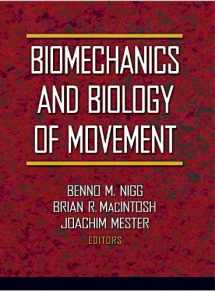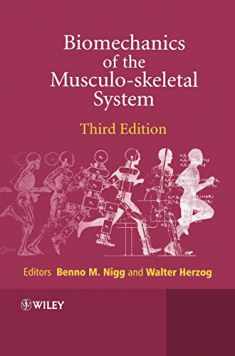
Biomechanics and Biology of Movement
Book details
Summary
Description
Drawing on the expertise of 31 international researchers in biomechanics, exercise physiology, and motor behavior, Biomechanics and Biology of Movement provides an integrated, multidisciplinary, scientific approach to understanding human movement. As a text, it uses an integrated scientific approach to explore solutions to problems in human movement. As a complete reference volume, it provides an overview of how energy and work, balance and control, load factors, fatigue, and exercise interact to affect performance.
Edited by three renowned specialists in the field—Benno M. Nigg, Brian R. MacIntosh, and Joachim Mester—the text contains over 130 mathematical equations to illustrate and increase understanding of its concepts. The editors defined the important components of topics such as work and energy, balance and motor control, load and excessive load, and fatigue and invited world-renowned experts in these areas to contribute from their viewpoints.
Following an introduction highlighting the necessity of an interdisciplinary approach incorporating biology, biomechanics, biochemistry, physics, physiology, and other sciences, Biomechanics and Biology of Movement provides a four-part approach to problem solving arising from various movement, exercise, and sport sciences.
Each part opens with a chronology of major events in research history and ends with a summary and a glossary of key terms.
Part I examines chemical, mechanical, physiological, electrical, thermal, and other energy forms, and their interrelationship and transformation in order to produce optimal performance. Sport shoes, the pole used in pole vaulting, and specialized surfaces that allow storage and return of energy to the athlete serve as examples of how these energy factors work together and affect an athlete's performance.
Part II discusses how balance, motor control systems, and, most importantly, gravity interact to produce all human movement. This section also includes methods for applying these insights to individual performance situations.
Part III explores the importance of mechanical load and force as well as their impact, both internal and external, on specific physical structures and systems, activities, and overall health. Strategies for preventing or reducing injuries and enhancing performance are also included.
Finally, Part IV explores the interplay among exercise, muscle fatigue, and methods for its detection as well as some results of muscle fatigue such as impaired mobility and the potential for injury.
Readers will also learn how to apply integrated scientific research to
-optimize muscle function,
-enhance energy balance for physical activities,
-prevent injuries in athletes,
-prolong physical ability in active, older adults,
-rehabilitate joint instability,
-increase muscular endurance,
-discover limits of performance due to fatigue, and
-resolve other problems in human movement.
Whatever your situation—biomechanist, physiologist, therapist, trainer, or student—Biomechanics and Biology of Movement offers you a thorough overview of biomechanics, exercise physiology, and motor behavior; how they impact human movement; and how an increased appreciation of their importance can enhance performance.


We would LOVE it if you could help us and other readers by reviewing the book
Book review




